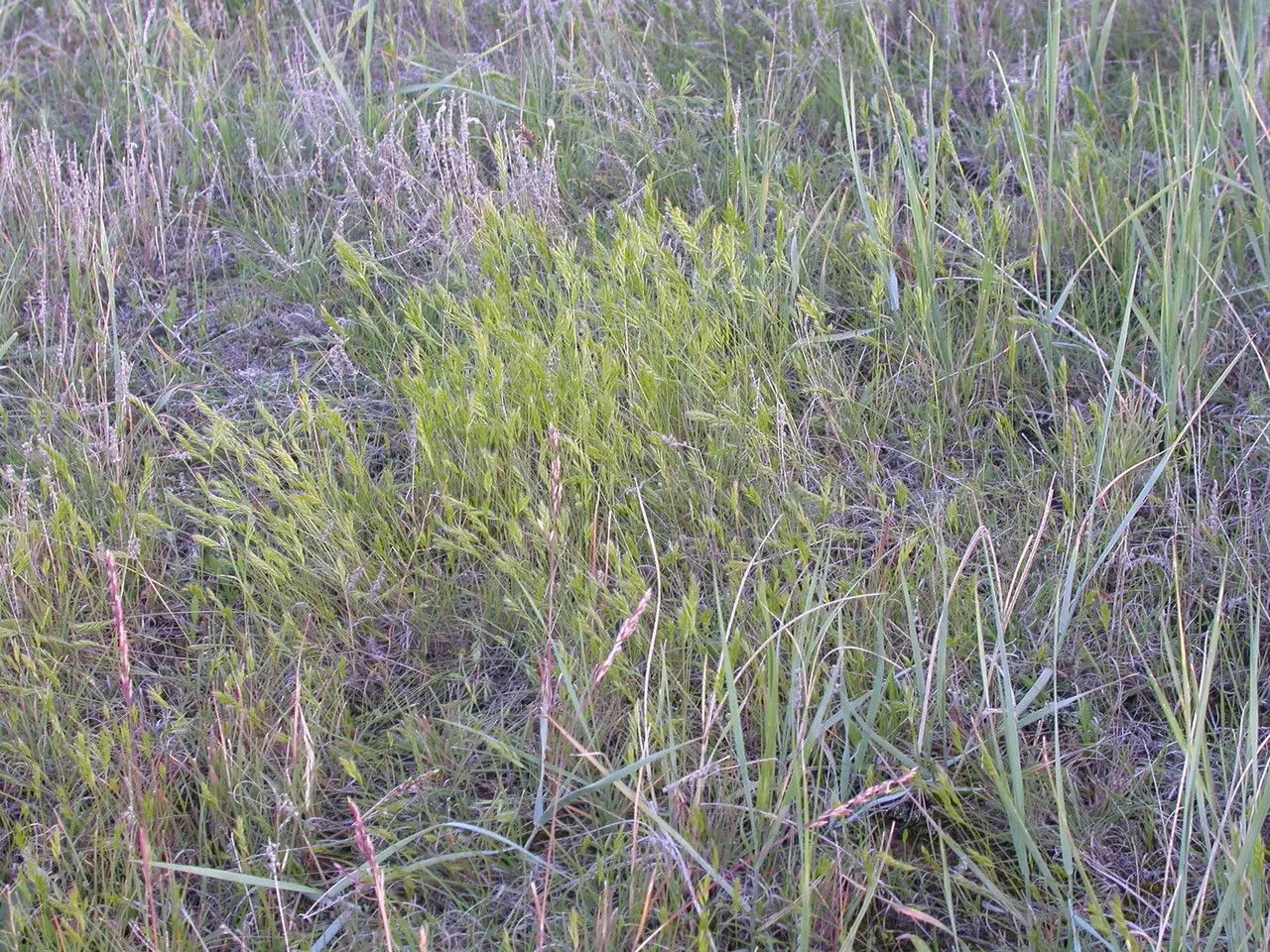
Author: Rydb.
Bibliography: Bull. Torrey Bot. Club 36:538. 1909
Year: 1788
Status: accepted
Rank: species
Genus: Vulpia
Vegetable: False
Observations: Unknown
Six-weeks fescue, scientifically identified as Vulpia octoflora, is a notable member of the Poaceae family. This slender and graceful grass species is characterized by certain distinct features which lend it both botanical interest and ecological significance.
Typically found in a variety of habitats, Vulpia octoflora thrives in open meadows, prairies, and sometimes on disturbed soils, showcasing its adaptability. Its name, Six-weeks fescue, is derived from its relatively short lifecycle, often completing its growth and reproductive phases within a span of approximately six weeks.
This annual grass species exhibits narrow, erect leaves and elongated, slender inflorescences that bear tiny spikelets. The spikelets are arranged along the central stem, giving the plant a delicate appearance. The growth pattern and morphological traits of Vulpia octoflora enable it to successfully compete in the ecosystems it inhabits, particularly in early successional stages following disturbances.
First scientifically described by Rydb. in 1909, with the formal documentation appearing in the Bulletin of the Torrey Botanical Club, Vulpia octoflora has since been subject to various studies focusing on its ecological roles and adaptability. However, detailed observational records regarding its specific behaviors and interactions in natural settings remain sparse, leaving room for further investigation.
Despite the lack of extensive observational data, Vulpia octoflora is recognized for its potential contributions to soil stabilization and as a pioneer species that prepares the ground for subsequent plant communities. Its rapid growth cycle and resilience make it a vital component in the dynamic processes of natural and agricultural landscapes.
In conclusion, Six-weeks fescue or Vulpia octoflora, stands out as an ecologically versatile grass within the Poaceae family. While much about its role and characteristics in various environments remains to be explored, its known attributes highlight its importance in ecological succession and soil stabilization efforts.
En: Six-weeks fescue, EIGHT-FLOWER SIX-WEEKS GRASS, Sixweeks fescue, Eight-flowered fescue, Pullout Grass, Six Weeks Fescue, Sixweeks Grass, Eight-flowered six-weeks grass
Fr: Vulpie octoflore, Fétuque octoflore
Sv: Amerikansk ekorrsvingel
Taken May 30, 2022 by Ulrich Stephinger (cc-by-sa)
Taken Jan 1, 1900 by EOL − Matt Lavin from Bozeman, Montana, USA (cc-by-sa)
Taken Jan 1, 1900 by EOL − Matt Lavin from Bozeman, Montana, USA (cc-by-sa)
Taken Jan 1, 1900 by EOL − Matt Lavin from Bozeman, Montana, USA (cc-by-sa)
Taken Jan 1, 1900 by EOL − Matt Lavin from Bozeman, Montana, USA (cc-by-sa)
Taken May 1, 2015 by EOL − andy (cc-by-nc)
Taken Jan 1, 1900 by EOL − Matt Lavin from Bozeman, Montana, USA (cc-by-sa)
Taken Jan 1, 1900 by EOL − Matt Lavin (cc-by-sa)
Family: Myrtaceae Author: (F.Muell.) K.D.Hill & L.A.S.Johnson Bibliography: Telopea 6: 402 (1995) Year: 1995 Status:…
Family: Rubiaceae Author: Pierre ex A.Froehner Bibliography: Notizbl. Bot. Gart. Berlin-Dahlem 1: 237 (1897) Year:…
Family: Sapindaceae Author: Koidz. Bibliography: J. Coll. Sci. Imp. Univ. Tokyo 32(1): 38 (1911) Year:…
Family: Asteraceae Author: A.Gray Bibliography: Pacif. Railr. Rep.: 107 (1857) Year: 1857 Status: accepted Rank:…
Family: Fabaceae Author: Medik. Bibliography: Vorles. Churpfälz. Phys.-Ökon. Ges. 2: 398 (1787) Year: 1787 Status:…
Family: Aspleniaceae Author: (Cav.) Alston Bibliography: Bull. Misc. Inform. Kew 1932: 309 (1932) Year: 1932…